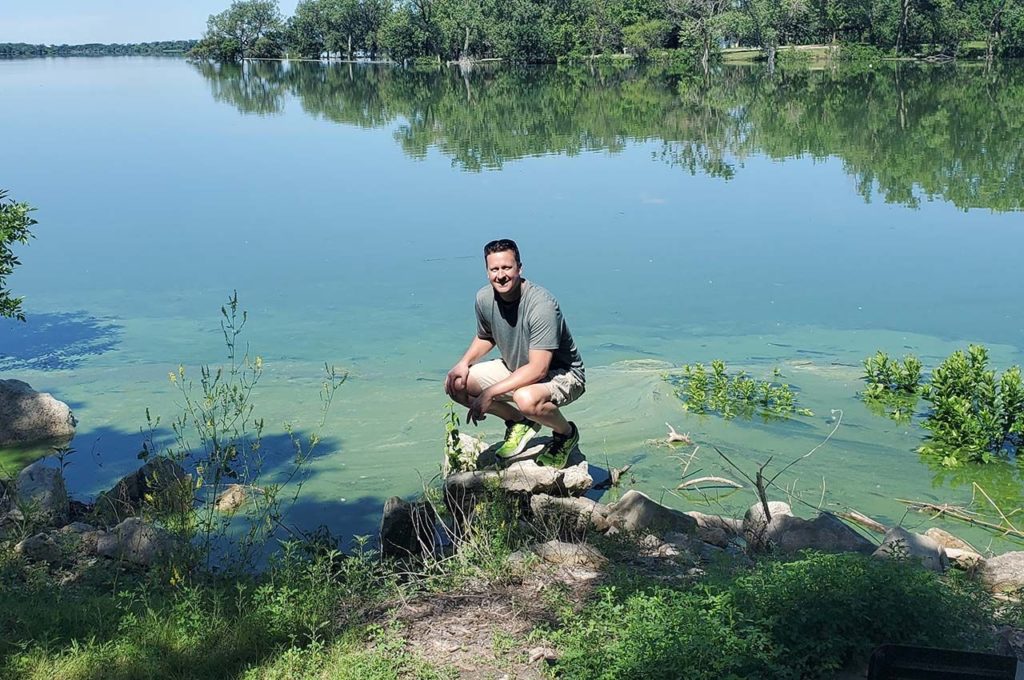Illinois Institute of Technology (Illinois Tech) assistant professor David Lampert was recently awarded funding by the U.S. Environmental Protection Agency’s People, Prosperity, and the Planet (P3) Student Design Competition for a project to stop the spread of “forever chemicals” into waterways. Lampert’s project—one of just three nationwide selected for phase II funding—focuses on preventing the movement of perfluoroalkyl and polyfluoroalkyl substances (PFAS) and is aimed at finding solutions that can be implemented on a large scale.

PFAS are a class of chemicals that have been used in a wide range of commercial products, including non-stick pans and shampoo, since the 1960s. Some types of PFAS have been linked to negative health impacts, including cancer, and are referred to as “forever chemicals” because they do not break down in nature. The use of some types of PFAS have decreased, but many still show up in products.
“If you take a blood sample of basically anyone and measure it, you can find a detectable level of these PFAS compounds,” Lampert said.
Lampert is leading a team of students in a project that will test various materials for their ability to capture PFAS as it moves. The team will also include students with business, social science, and entrepreneurial expertise as the project progresses.
Phase I funding from the EPA’s P3 project allowed Lampert and his team to conduct a pilot study, which involved designing a laboratory experiment to track the movement of PFAS through soil and groundwater over time and examine the ability of various materials to contain the pollution and protect surface water resources.
For phase II, Lampert plans to add water columns and worms to the soil system to see how water flow and animal burrowing impact the movement of PFAS. He will also test the soil for additional types of PFAS and study how worms bioaccumulate the compounds, which is important for understanding how PFAS spread to humans through bioaccumulation in fish. These findings will help Lampert identify and test potential intervention strategies for stopping the movement of PFAS.
“There’s a complicated hydrological-environmental modeling question there to try to understand this whole process of how the PFAS gets from a contaminated area to the receptors and people who might be exposed to it,” Lampert continued. “Our goal is to find a solution that can be implemented on larger scales.”
Lampert’s team also plans to conduct a field test at an existing PFAS-heavy site. The ultimate goal of the project is to develop and demonstrate effective methods for preventing the movement of PFAS into water resources, improving water quality and protecting human health.
“I’m trying to understand what processes are happening in our water systems and trying to figure out how we can do better from an ecology point of view, a human health point of view, and sustainability point of view,” Lampert added.
 TEXTILES.ORG
TEXTILES.ORG


